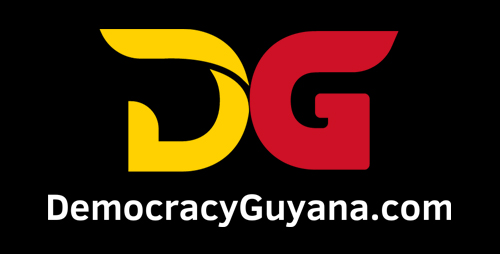Stabroek News (SN) editorial of April 8, 2024, posited that the carbon content per barrel of crude oil is 0.43 metric tons and concluded that the President Ali Administration is single-minded focus on extraction and infrastructure. Despite SN’s presence at the Vice President, Dr. Bharrat Jagdeo’s weekly press conference, the editorial mischievously ignored factual information to disseminate inaccurate information perhaps intentionally.
In a recent letter to the editor, I had pointed out that in a “critical review” of a proposed carbon tax article published by a Guyanese academic, that the carbon intensity of Guyana’s crude oil is likely to be less than the average carbon intensity per barrel in the United States (U.S) (0.433 mt/barrel), which the author relied on, and now Stabroek News. The carbon content per barrel of crude oil varies based on geographic location and the type/quality of crude. In the case of Guyana, we have the light sweet crude, which means that the carbon intensity in our crude oil is more likely to be less than the carbon content of say Venezuela for instance, because Venezuela has the heavier and sour crude and the global weighted average. In my critical review of the said paper, I relied on a more recent credible empirical study that utilized a global dataset to calculate the weighted average carbon intensity. The weighted average, according to that study is 0.051 mt/barrel, whereas the average carbon intensity in the U.S according to U.S Environmental Protection Agency (EPA), is 0.433 mt/barrel. This means that the global weighted average is lower than the arithmetic average for the U.S.
Subsequently, at his press conference held on March 28th, 2024, the Vice President disclosed that the carbon content in our crude oil is 40 kg (0.040 mt) per barrel. This means that the carbon content in Guyana’s crude (0.04 mt/barrel) is indeed lower than the global weighted average (0.051 mt/barrel). As such, the carbon content for the proven reserves of 11 billion barrels, thus far, is an estimated 440 million mt, almost 5 times less than the 2 billion mt that the BBC reporter posited.
Further, I would like the SN editorial to consider the following.
Globally, the average annual climate finance flows reached almost US$1.3 trillion 2021/2022, nearly doubling 2019/2020 levels. This increase was largely driven by mitigation finance, which was reportedly up by US$439 billion from 2019/2020.
-
Adaptation finance continues to lag: while adaptation finance grew by 28% in 2022 compared to 2021, reaching an all-time high of US$63 billion, there is still a huge gap based on the estimated needs of US$212 billion per year by 2030 for developing countries alone.
-
Climate finance globally continues to be sourced largely from traditional sources, such as grants and debt instruments…from Development finance institutions accounting for 57% of all public finance.
-
In that context, renewed emphasis on the strategic use of public funds and other concessional financing to mobilize significantly more private capital is imperative.
In so far as the global energy transition agenda is concerned, the world continues to lag behind on multiple fronts, such that it may ultimately render the 2050 goals unachievable. In this regard, there are a number of gaps to be bridged in order to reach net-zero by 2050, as outlined hereunder.
-
The Generation Gap. In recent years, backed by subsidy schemes, tax credits, and a falling levelized cost of energy, the installation of renewable energy capacity has expanded tremendously. Globally, 1,282 gigawatts (GW) of renewable power capacity was added to the energy system between 2016 and 2021, and the International Energy Agency (IEA) projects that an additional 2,400 GW of renewable capacity will be installed in 2022 and 2027. However, if the world is to reach net zero by 2050, capacity will have to grow to more than 27,000 GW―an eightfold increase from 2021 levels.
-
The Grid Gap. Over the past decade, the world has invested an average of $300 billion per year. According to the IEA, annual investments will need to rise to the range of US$560 billion to US$780 billion in the 2030s.
-
The Storage Gap. Renewable energy tends to be intermittent (the sun doesn’t always shine, and the wind doesn’t always blow, while the demand for electricity is relatively constant and predictable). Hence, to have an orderly transition to a decarbonized grid, a significant amount of electricity storage capacity will be required, in the form of batteries or pumped hydropower schemes. Significant investments in grid-scale battery storage have been made. In 2022, globally, 16 GW of grid-skill battery storage was added. According to the IEA, to get on track with the net-zero targets, which would require a 143-fold increase by 2050, annual additions must pick up significantly to an average of more than 80 GW per year over the 2022 to 2030 period.
-
The total funding gap needs to almost triple. To keep on track with net-zero emissions by 2050 goals, the IEA estimates that annual investment in clean energy will have to rise substantially from the projected 2023 level of US$1.8 trillion to US$4.6 trillion in 2030. Therefore, bridging the energy transition gap is likely to remain a challenging task in meeting those targets to narrow the gap.
Against the foregoing background, the consequential effect is such that the global demand for fossil fuel remains buoyant amidst an increasingly focused global agenda on the energy transition goals by 2050. Global demand is expected to remain strong, especially since the U.S needs to rebuild its strategic reserves. The U.S strategic reserves was down to its lowest level in decades at 347 million/bbls (2023) down from a peak level of 727 million/bbls in July 2011. Other countries such as India and China are also building up their strategic reserves as part of their energy security strategy.
Finally, the SN editorial conveniently ignored the Low Carbon Development Strategy, and the Government’s overarching development and transformation agenda altogether, that are not single-minded focus, but multifaceted focus.





